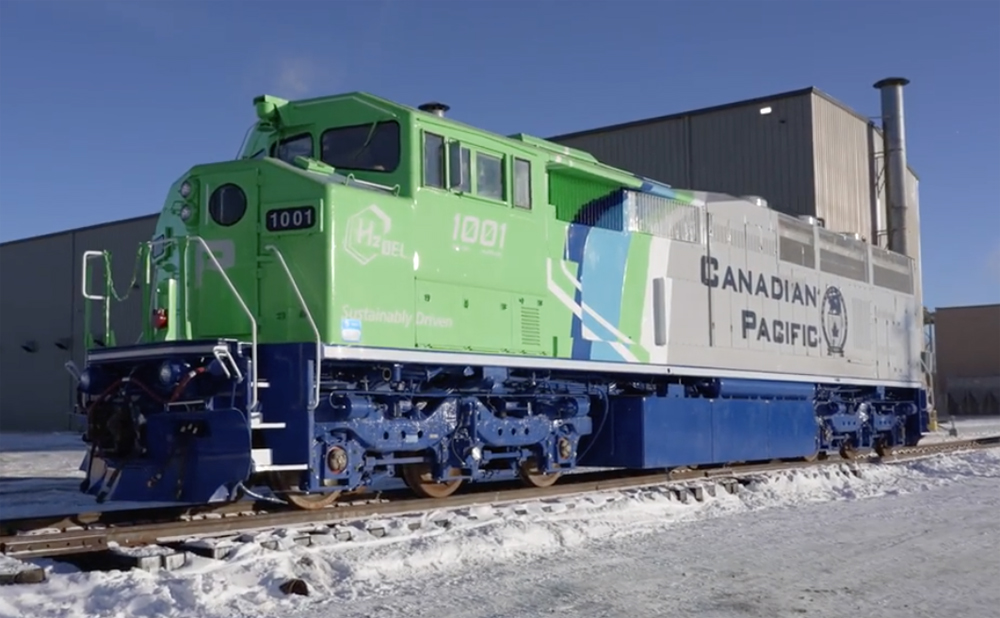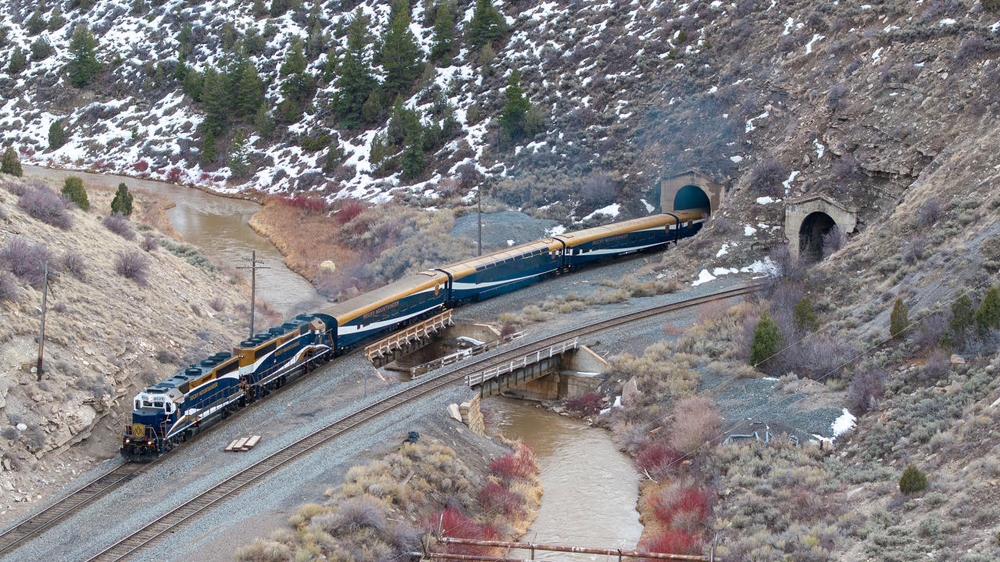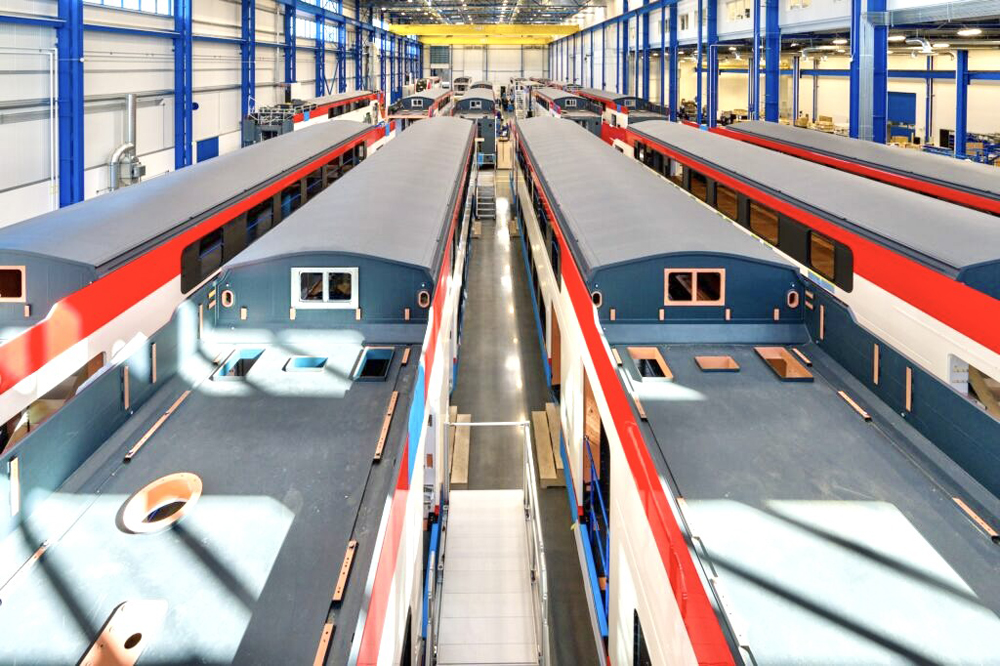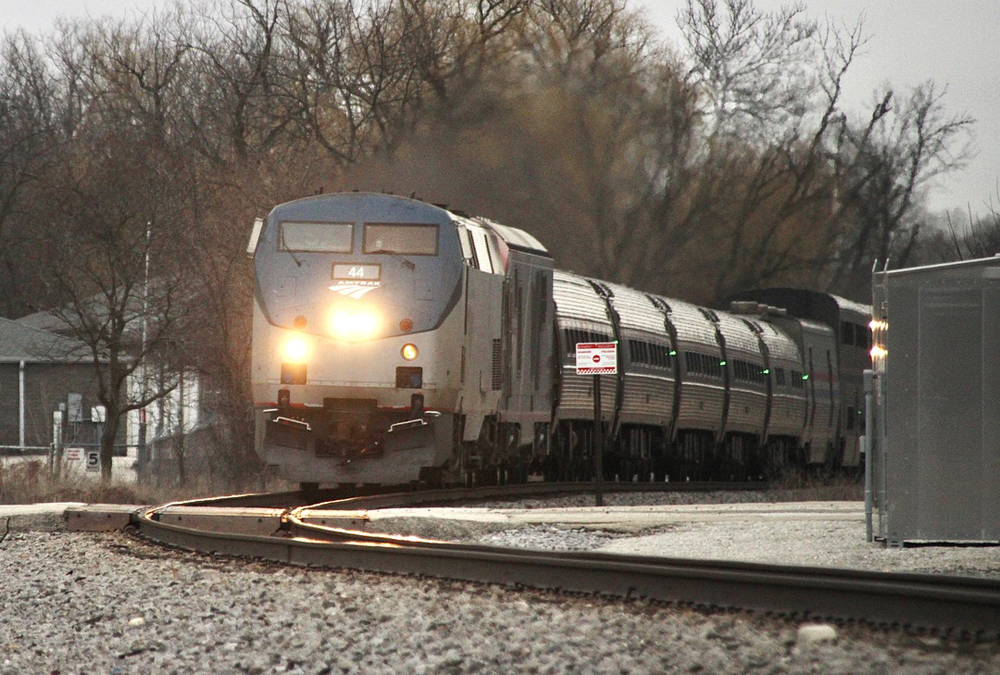
CPKC and CSX Transportation will form a joint venture to build and deploy hydrogen locomotive conversion kits for diesel-electric locomotives, the railroads said today.
The first step: CSX will convert one of its diesel locomotives using a hydrogen conversion kit developed by CPKC. The conversion work will be done at CSX’s locomotive shop in Huntington, W.Va.
“This innovative collaboration expands our hydrogen locomotive program beyond a single railroad and represents an exciting next step in proving the long-term viability of hydrogen as a solution to emissions reduction for our industry,” CPKC CEO Keith Creel said in a statement. “Our hydrogen locomotive went from concept to reality in 24 months with the first zero emissions hydrogen locomotive having already pulled freight in revenue service. We look forward to this collaboration as we work to create a lower carbon future.”
CSX CEO Joe Hinrichs said his railroad “looks forward to working as a partner with CPKC in the development of the hydrogen locomotive program as it demonstrates our commitment to implementing alternative fuel solutions that could further enhance our emissions performance and offer our customers an even more environmentally friendly transportation solution. This exciting initiative will greatly benefit from the expertise of CSX’s advanced, large-scale facilities, where the locomotives will be built.”
CSX will be concentrating on converting low-horsepower locomotives, a spokesman said. The first unit is expected to be operational in the first quarter of 2024. The railroad did not specify what locomotive model would be converted first.
To meet their emissions reduction goals, railroads have been experimenting with battery-electric and hydrogen fuel cell locomotives, as well as increased use of biofuels.
In December 2020, Canadian Pacific announced plans to develop North America’s first line-haul hydrogen-powered locomotive. CP’s first hydrogen locomotive, converted SD40-2F No. 1001, is dubbed H2 0EL for “hydrogen zero-emissions locomotive.”
It made its first revenue run in local service in Calgary in October 2022. The locomotive uses hydrogen fuel cells and batteries to power its electric traction motors and was designed and built in-house by a team of CP engineers.
The unit now has accumulated more than 1,000 miles of testing in revenue service.
CPKC has deployed a second hydrogen locomotive for testing in terminal operations, a program expansion supported by funding awarded by Emissions Reduction Alberta and the Government of Canada Low Carbon Economy Fund. The second hydrogen locomotive is expected to enter service later in 2023.
Last month CPKC and metallurgical coal producer Teck Resources reached a new multi-year contract that includes a first-of-its-kind program that will use CPKC’s hydrogen fuel-cell locomotives in coal train service [see “CPKC, Teck Resources pilot program …,” Trains News Wire, May 4, 2023].
Note: Updated at 4:49 a.m. CDT on June 23 with additional detail from CSX.














The hydrogen storage in blimps was in a series of cloth bags, easily ripped. The hydrogen storage in locomotives is in steel tanks with means to protect against explosion.
Everybody here seems to act as if there is no fire and explosion potential in diesel electrics or even in old steam engines. As has been noted, hydrogen is lighter than air so it rises up and away when released.
All of these factors are being examined now by the tests of these locomotives.
There is a potential huge financial and environmental benefit to hydrogen. It can be produced by solar panels or wind turbine at sites which are distant from pipelines but which are on the railroad. Once you have the original power installation, the cost of electricity is only in the maintenace of the system.
Note that the Hindenberg killed only 35 of the 97 people who were on board and only one person on the ground perished.
The last hydrogen event I am aware of was when NASA and ULA were testing the new Vulcan-Centaur boost stage at Stennis 6 weeks ago. There was a small hydrogen tank leak, but instead of it dispersing in the air, the hydrogen gas “pooled” up at the top of the test stand. A spark found the gas pool and caused a nice explosion of the booster and did considerable damage to the test stand.
Todays hydrogen tanks are made in such a way that suppresses the ability for a spontaneous ignition to occur. Through the use of baffles, internal pressure vents and valves, double outer wall construction and differential cross feeds, make these explosions less likely.
I totally agree with Messera and Carlson. Hinrichs is a breath of fresh air a thousand percent better than Foote. Proud to be a CSX stockholder that believes CSX has a great future if they keep going in the same direction and innovating.
As a long time CSX Stock Holder (back to B&O Days) I can’t be more pleased with Joe Hinrichs as our CEO. Willing to try new things and as a past customer at Ford he understands the customer perspective, not just the bean counters.
Hydrogen power- might work- might not work, but he’s willing to try new things to improve service and the environment. Time will tell. Felt the same way when CSX was among the first to establish sick eave policies for employees. I think he, and CSX now have a great future.
Can’t agree more. Joe has been the breath of fresh air CSX (and indeed, the entire industry) needed. Alan Shaw over at NS has also been impressing me. I just wonder how much longer the Wall Street types will let them keep getting away with this.
Shouldn’t hydrogen be like a major concern to people? Because it kinda is to me, not to mention the fact that hydrogen bombs exist and they’re way more powerful and destructive than atomic bombs. So I’m worried that some of these hydrogen trains could be time bombs if one has a major crash.
Hydrogen is lighter than air, so it will rise (as opposed to propane pooling along the ground, causing a much larger danger of explosion).
And hydrogen bombs use nuclear fusion – a completely different reaction than hydrogen simply burning or exploding.
LOL 😀
In the steel mill I worked at, we had a hydrogen explosion caused by a failure in the fume collection system after a lance tip failure, was quite spectacular, did a lot of damage, shut us down for over a week.
So I am a wee bit concerned as we watch industries develop hydrogen power.
Could a derailed and overturned hydrogen powered locomotive potentially explode as the Hindenburg did?